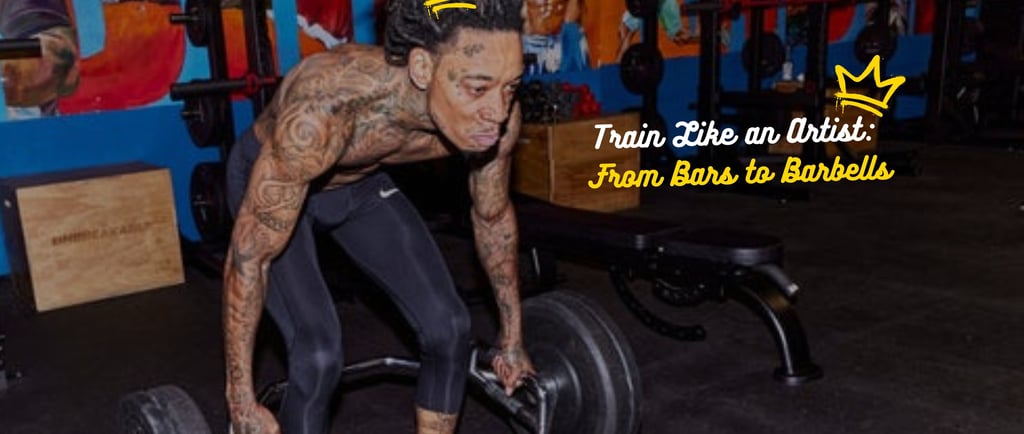Train Like An Arist: From Bars to Barbells
Every artist trains differently — but the best ones stay consistent. From powerlifting to Muay Thai, their styles build the tools they need to thrive: strength, speed, endurance, or resilience. In this blog, we break down how artists like Method Man, Wiz Khalifa, and Action Bronson train, and what you can take from their routines to level up your own performance game.
WEIGHT TRAININGSTRENGTH TRAININGMUAY THAI BOXINGBOXINGBRASILIAN JIU JITSUPOWERLIFTINGBODY BUILDINGHIIT (HIGH INTENSITY INTERVAL TRAINING)
dj miss kittie
5/20/20252 min read


Different Artists. Different Styles. What You Can Learn
The best artists train their bodies the same way they train their music — by staying consistent.
While their training styles vary, each approach builds a different weapon for performance: strength, endurance, speed, or resilience.
Here’s a breakdown of what different artists focus on — and how you can apply it to level up your own game.
Step 1: Build Brute Strength and Resilience
Training Style: Powerlifting
Artist Example: Method Man
Focuses on heavy lifts like squat, deadlift, and bench press.
Builds foundational strength, joint stability, and long-term durability for physical demands on stage.
Helps protect against fatigue, injuries, and performance breakdown.
Fact: Research shows strength training improves endurance economy and reduces overall fatigue during long performances.
Step 2: Develop Agility, Focus, and Explosive Energy
Training Style: Muay Thai, Boxing
Artist Example: Wiz Khalifa
Focuses on sharp reflexes, hand-eye coordination, and fast footwork.
Builds speed, power, and the ability to adjust quickly under pressure.
Conditions both the mind and body for live performance demands.
Fact: Martial arts training has been shown to enhance reaction time and cognitive flexibility, critical skills for live shows.
Step 3: Build Endurance and Sharpness Under Fatigue
Training Style: High-Intensity Interval Training (HIIT)
Artist Examples: Common, Freddie Gibbs, Ludacris
Alternates short bursts of maximum effort with quick recovery periods.
Builds stamina for long performances with high physical output.
Trains the body to recover quickly between intense bouts of movement.
Fact: HIIT improves VO₂ max and lactate threshold, two key markers of endurance performance.
Step 4: Combine Functional Strength, Flow, and Mental Grit
Training Style: Kettlebell, Club, and Strongman Training
Artist Example: Action Bronson
Focuses on unconventional, full-body movements that require stability, mobility, and rotational strength.
Prepares the body for unpredictable physical demands, like moving gear, performing dynamically, or long tour schedules.
Improves coordination, grip strength, and joint integrity.
Fact: Functional training improves balance, mobility, and injury prevention across multiple movement planes.
Step 5: Build Aesthetic Muscle and Endurance for Performances
Training Style: Bodybuilding
Artist Example: Jim Jones, Busta Rhymes
Focuses on hypertrophy (muscle growth) through high-volume resistance training.
Builds muscle endurance for long performances and improves physical confidence on stage.
Enhances posture, symmetry, and joint protection under repetitive stress.
Fact: Bodybuilding-style training improves local muscular endurance and physical resilience during repetitive tasks.
Step 6: Strengthen Discipline, Flexibility, and Strategic Mindset
Training Style: Brazilian Jiu Jitsu
Artist Example: Rakaa Iriscience (Dilated Peoples)
Emphasizes total body control, breathwork under stress, and strategic problem-solving.
Builds flexibility, mobility, and psychological resilience during chaotic situations like touring or back-to-back shows.
Supports longevity by developing adaptability and calmness under pressure.
Fact: Brazilian Jiu Jitsu practitioners show better stress management and higher heart rate variability, indicators of greater recovery and resilience.
Consistency = Mastery
Different training styles build different skills.
But consistency is the foundation that every artist, athlete, and performer relies on for real progress.
Show up for your body the same way you show up for your music — and you’ll build strength that lasts a lifetime.
